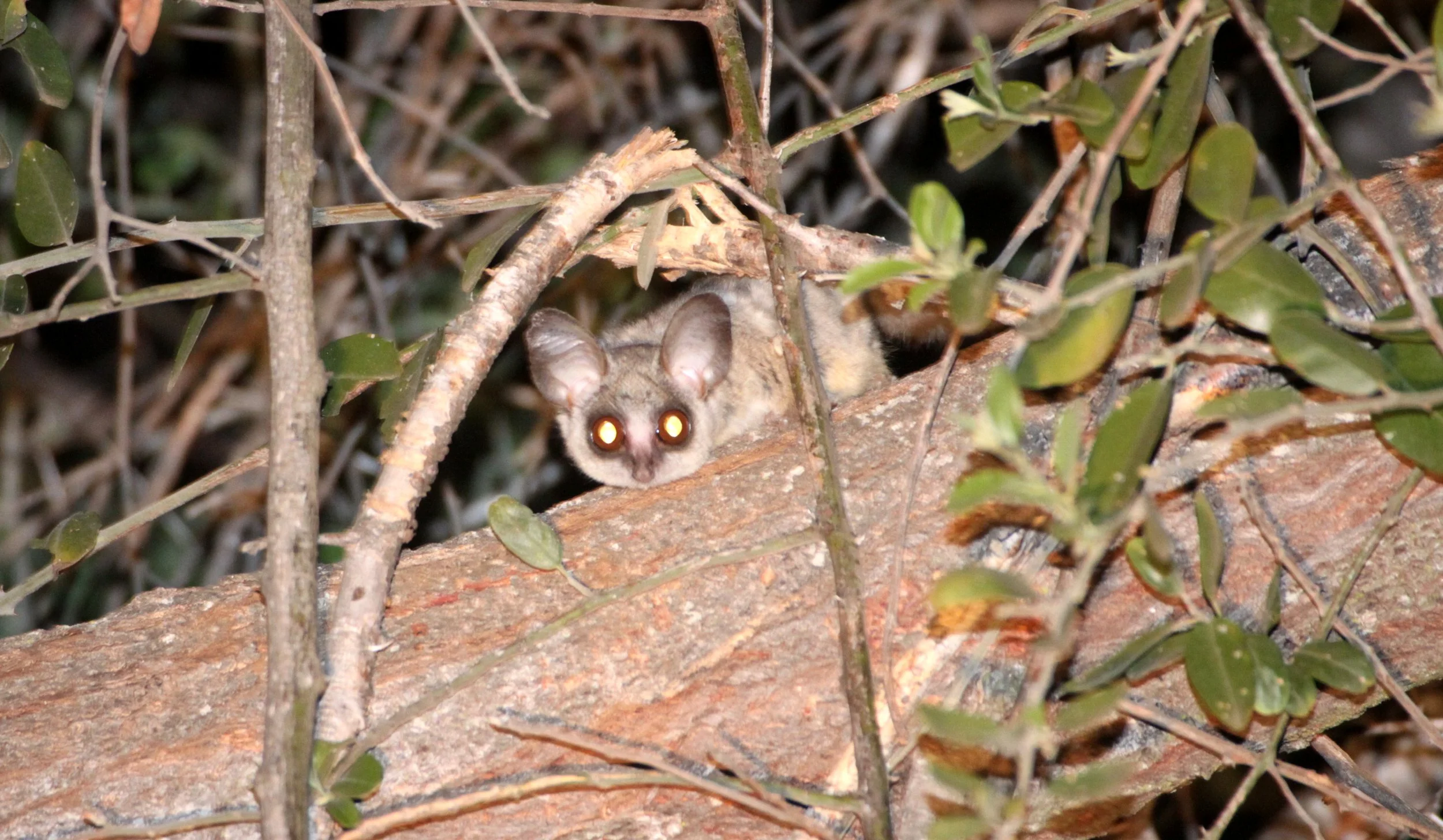Lesser bushbabies, or lesser galagos, are strepsirrhine primates of the genus Galago. They are classified, along with the bushbabies (genus Euoticus) and the rest of the galagos (genera Otolemur, Galagoides, Paragalago, and Sciurocheirus), in the family Galagidae. They are probably the most numerous primate in Africa, and can be found in every large forest on the continent, inhabiting forested areas, savannas, riverine bush and open woodlands.
They mark their territory by urinating on their hands and leaving traces on the trees they climb across, and they follow these detectable paths through the trees night after night. Males will also urinate on females to mark them. They are related to lorises, and have similar behavior and anatomy. They are much faster, however, and typical hunt by speed rather than by stealth. Primitive bushbabies are thought to have been the ancestors of all lemurs.
Lesser bushbabies are distributed through most of Sub-Saharan Africa, ranging from Senegal east to Somalia and down to South Africa (excepting its southern extreme) and are present in almost every country in between. However, there are great differences in their extent and distribution by species. G. senegalensis is the most widespread species, extending from Senegal in the west across central Africa to eastern Africa. G. moholi has a broad distribution over much of southern Africa. G. gallarum has more restricted distributions in eastern Africa, and G. matschiei is restricted to Uganda. Lesser bushbabies are found in a variety of habitats, such as woodland, bushland, savanna, montane forest, riverine habitats; favouring trees with little grass around them.








